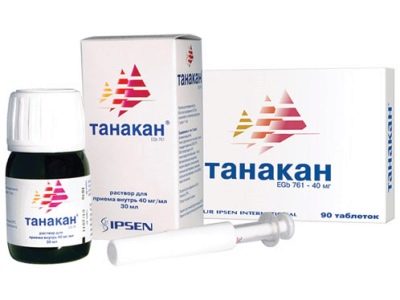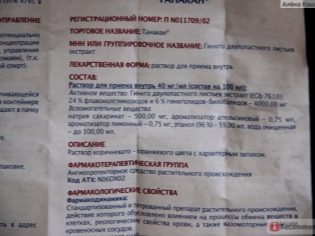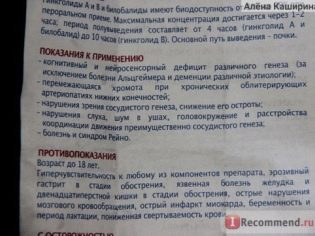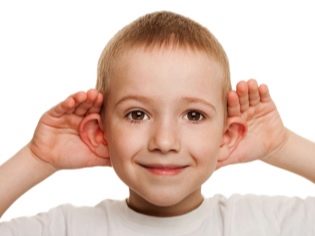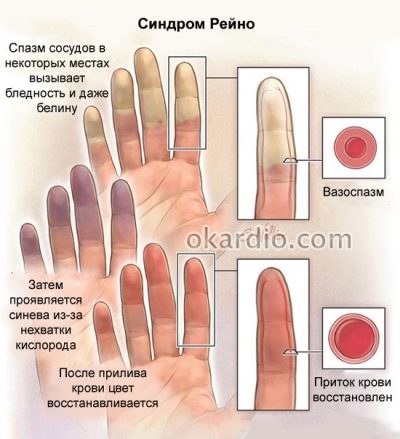Tanakan for children: instructions for use
The active ingredient of the OTC "Tanakan" is an extract of ginkgo biloba leaves. On the basis of this popular plant today, many preparations are produced, it is often included in the composition of dietary supplements, but in the medical environment the attitude towards it is still ambiguous. Critics claim that his positive action is exaggerated.
Feasibility of use in children
Instructions for use of the drug "Tanakan" reports about its unwanted use in children (up to 18 years). But it happens that the manufacturer of the medicinal product writes one thing, but in fact the remedy is often prescribed even for infants. This is exactly the case.
Most physicians refer to the positive experience of therapy with this herbal remedy, but Dr. Komarovsky has a different opinion on this matter, since the children's organism is not identical to an adult.
Before treatment, "Tanakan" will not prevent a thorough comprehensive examination to take into account the individual characteristics of the body.
Affiliation to pharmacological groups
The drug is an angioprotectant of plant origin, used as a microcirculation corrector. The action consists in antispasmodic activity, positive effect on the vessels, improvement of microcirculation and rheological properties of blood, increase of capillary resistance, reduction of tissue swelling, restoration of metabolism in the walls of blood vessels.
It refers to the correctors of the cerebral blood circulation disorder, which has a beneficial effect on the blood supply to the brain, microcirculation, oxygenation processes. Normalizes the metabolism of brain tissue, can prevent the development of ischemic brain damage, but with some side effects. It has a positive effect on the metabolism of the ischemic brain due to its antioxidant and antihypoxic effect.
Composition and dosage form
The preparation includes dry extract of biloba ginkgo and excipients. Available in several forms: a solution (which is often mistaken for syrup or drops) for ingesting a dirty orange color with a specific smell and biconvex round tablets coated with a brick color with a light brown content. All analogues of this drug have their own characteristics, therefore, as an alternative, are not recommended.
pharmachologic effect
The main pharmacological effect of the drug is the improvement of cerebral circulation. The therapeutic effect is due to its effect on metabolic processes inside the cells, some characteristics of the blood, the vasomotor vessel.
The drug improves the oxygen supply of the brain, restores arterial and venous tone, microcirculation, metabolism, blood movement, reduces the tendency of red blood cells to aggregate, inhibits platelet activity, acts as an antihypoxant, affects the processes associated with the work of some neurotransmitters (noradrenaline, acetylcholine, dofamine serotonin). Due to its direct and indirect effects on brain processes, it is effective in treating:
- intellectual-mnestic pathologies;
- difficulty concentrating and distraction;
- mental infantilism and cognitive disorders;
- various kinds of violations of the intellect and thinking;
- memory impairment and decreased mental performance;
- decrease in mental activity, mental function.
It can act as a prophylactic agent for cerebrovascular disorders, reducing the risk of disability and mortality from stroke.
Dosing and Administration
Tanakan should be taken orally after meals with plenty of water. The dosage for children under 7 years of age differs from that given to adolescents. Single dose for adults: a tablet or a milliliter of solution (dial with a pipette and dispenser and dissolve in half a glass of water). In both cases, taken 3 times a day.
The course of treatment is from three to six months (minimum), a persistent improvement in condition appears after a month of administration. Bioavailability of the drug is almost 90% when taken orally. The maximum concentration in the blood is observed in an hour or two after administration, mainly excreted by the kidneys.
Indications
Indications for administration are diseases mainly associated with pathologies of the vascular system:
- Sensorine and cognitive deficits of different origin (when the pathogenesis of such disorders is caused by metabolic failure, the correction of which leads to the normalization of mental functions). An example of such reversible cognitive impairment is dysmetabolic encephalopathy, pathology of higher brain functions in dropsy or brain tumors, anxiety-depressive pathologies, dementia.
- Intermittent claudicationcaused by chronic lower limb arteriopathy. Due to the systematic vasospasm and damage to the nerve endings, an ischemic process occurs. Dystrophic neurovascular pathology leads to pain while walking, feeling of tension, heaviness, paresthesia.
- Visual impairment of vascular genesis, a decrease in its severity (the main causes of vascular lesions in the visual zone are infectious (most often ENT diseases, atherosclerosis, hypertension, hypotension, arteritis, periarthritis).
- Pathology of hearing, tinnitus of predominantly vascular nature (infections, including ENT organs, atherosclerotic, dyscirculatory, dystonic changes in vessels in atherosclerosis, hypertension, NDC).
- Diseases associated with the vestibular apparatus dizziness, vertigo, problems with stability, ischemic hearing loss and balance (vestibular problems caused by vascular diseases of the brain, in frequency are in the first place among the rest).
- Children prescribed in mild cognitive impairment (characterized by a decrease in memory, a pronounced feeling of fatigue in mental activity, difficult learning ability, inability to concentrate for a long time on performing one process when learning new seems difficult, even when in fact it happens successfully).
- Raynaud's disease and syndrome (the occurrence is associated with a disorder in the regulatory function of the vessels by the sympathetic nerves, which causes their narrowing and an increase in resistance to blood flow, which causes local tissue ischemia).
Effective "Tanakan" and with intellectual-mnestic pathologies (impaired memory, intelligence, emotional-volitional sphere, difficulties in acquiring new knowledge and skills, automation of actions, poor patterned speech, lack of control of emotions, short temper). The positive experience of the use of "Tanakan" in such violations contributed to its popularization.
The need for prescribing a premature baby is carefully weighed, but if a kid, for example, is 3 years old, then the practice of prescribing is widespread. According to neurologists, in infancy and childhood, the drug quickly reduces intracranial pressure, stabilizes the psychoemotional state, removes FRA, and normalizes the work of the musculoskeletal system.
Contraindications and side effects
The drug can not be taken with a high sensitivity to its components, children and minors with diseases of the stomach, impaired lactose absorption, myocardial infarction, low blood clotting, pregnancy, breastfeeding.
Possible side effects of the drug include headache, dizziness, nausea, dermatological and allergic symptoms. In rare cases, dyspeptic disorders, indigestion, decrease in blood clotting, and hemorrhage (with prolonged use) may occur.
In case of any discomfort, the drug is canceled.
Parent reviews
Clinical trials of this drug did not reveal its toxicity. Reviews about this facility of parents contain different impressions. Some claim that they did not notice the changes, others are confident that the drug has had a positive effect, and others blame it for changing the child’s well-being and behavior for the worse. But, perhaps, “Tanakan” has nothing to do with it, and the reason lies in any individual peculiarities or in the presence of other diseases.
It is impossible to prescribe this medicine for children on its own, only a specialist can assess the need for its use.
Reviews of the doctor on the drug, see the following video.




